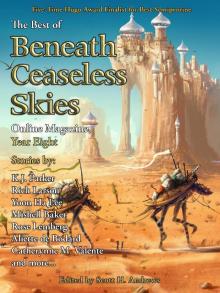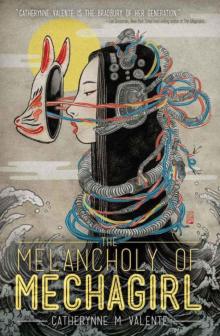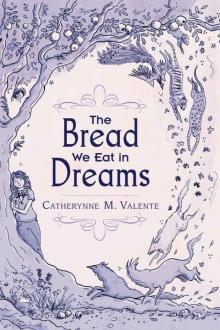


Under the Banner of Heaven, Page 2
Jon Krakauer
A crude tattoo of a spider web radiates from Dan's left elbow, wrapping the crook of his arm in a jagged indigo lattice. His wrists are bound in handcuffs, and his shackled ankles are chained to a steel ring embedded in the concrete floor. On his otherwise bare feet are cheap rubber flip-flops. A large man, he cheerfully refers to the prison's maximum-security unit as “my monastery.”
Every morning a wake-up alarm echoes through the halls of the unit at 6:30, followed by a head count. The door to his cell remains locked twenty hours a day. Even when it isn't locked, Dan says, “I'm almost always in my cell. The only time I leave is to shower or serve food—I have a job serving meals. But I don't really associate with people that much. I try not to leave my cell more often than I absolutely have to. There are so many assholes in here. They get you caught up in their little dramas, and you end up having to fuck somebody up. And the next thing you know your privileges are taken away. I've got too much to lose. I'm in a really comfortable situation right now. I've got a really good cellie, and I don't want to lose him.”
That “cellie,” or cell mate, is Mark Hofmann, a once-devout Mormon who lost his faith while serving as a missionary in England and secretly became an atheist, although he continued to present himself as an exemplary Latter-day Saint when he returned to Utah. Soon thereafter, Hofmann discovered that he had a special talent for forgery. He began to churn out bogus historical documents, brilliantly rendered, which fetched large sums from collectors. In October 1985, upon concluding that investigators were about to discover that several old Mormon documents he'd sold were fakes, he detonated a series of pipe bombs to divert detectives from his trail, killing two guiltless fellow Saints in the process.* Many of Hofmann's forgeries were intended to discredit Joseph Smith and the sacred history of Mormonism; more than four hundred of these fraudulent artifacts were purchased by the LDS Church (which believed they were authentic), then squirreled away in a vault to keep them from the public eye.
Although Hofmann now expresses contempt for religion in general and Mormonism in particular, his atheism doesn't seem to be an issue in his friendship with Dan Lafferty—despite the fact that Dan remains, by his own proud characterization, a religious zealot. “My beliefs are irrelevant to my cellie,” Dan confirms. “We're special brothers all the same. We're bound by the heart.”
Prior to Dan's conviction, and for more than a decade afterward, he steadfastly maintained that he was innocent of the murders of Brenda and Erica Lafferty. When he was arrested in Reno in August 1984, he told the arresting officers, “You think I have committed a crime of homicide, but I have not.” He still insists that he is innocent of any crime but, paradoxically, does not deny that he killed Brenda and Erica. When asked to explain how both these apparently contradictory statements can be true, he says, “I was doing God's will, which is not a crime.”
Lafferty isn't reticent about describing exactly what happened on July 24, 1984. He says that shortly after noon, he, Ron, and the two drifters who had been traveling with them, Ricky Knapp and Chip Carnes, drove to the apartment of his youngest brother, Allen, in American Fork, twenty minutes down the interstate from where he is now imprisoned. Inside the brick duplex he found his fifteen-month-old niece, Erica, standing in her crib, smiling up at him. “I spoke to her for a minute,” Lafferty recalls. “I told her, ‘I'm not sure what this is all about, but apparently it's God's will that you leave this world; perhaps we can talk about it later.' ” And then he ended her life with a ten-inch boning knife.
After dispatching Erica, he calmly walked into the kitchen and used the same knife to kill the baby's mother. Now, seventeen years after committing these two murders, he insists, very convincingly, that he has never felt any regret for the deed, or shame.
Like his older brother, Ron, Dan Lafferty was brought up as a pious Mormon. “I've always been interested in God and the Kingdom of God,” he says. “It's been the center of my focus since I was a young child.” And he is certain God intended for him to kill Brenda and Erica Lafferty: “It was like someone had taken me by the hand that day and led me comfortably through everything that happened. Ron had received a revelation from God that these lives were to be taken. I was the one who was supposed to do it. And if God wants something to be done, it will be done. You don't want to offend Him by refusing to do His work.”
These murders are shocking for a host of reasons, but no aspect of the crimes is more disturbing than Lafferty's complete and determined absence of remorse. How could an apparently sane, avowedly pious man kill a blameless woman and her baby so viciously, without the barest flicker of emotion? Whence did he derive the moral justification? What filled him with such certitude? Any attempt to answer such questions must plumb those murky sectors of the heart and head that prompt most of us to believe in God—and compel an impassioned few, predictably, to carry that irrational belief to its logical end.
There is a dark side to religious devotion that is too often ignored or denied. As a means of motivating people to be cruel or inhumane—as a means of inciting evil, to borrow the vocabulary of the devout—there may be no more potent force than religion. When the subject of religiously inspired bloodshed comes up, many Americans immediately think of Islamic fundamentalism, which is to be expected in the wake of the September 11 attacks on New York and Washington. But men have been committing heinous acts in the name of God ever since mankind began believing in deities, and extremists exist within all religions. Muhammad is not the only prophet whose words have been used to sanction barbarism; history has not lacked for Christians, Jews, Hindus, Sikhs, and even Buddhists who have been motivated by scripture to butcher innocents. Plenty of these religious extremists have been homegrown, corn-fed Americans.
Faith-based violence was present long before Osama bin Laden, and it will be with us long after his demise. Religious zealots like bin Laden, David Koresh, Jim Jones, Shoko Asahara,* and Dan Lafferty are common to every age, just as zealots of other stripes are. In any human endeavor, some fraction of its practitioners will be motivated to pursue that activity with such concentrated focus and unalloyed passion that it will consume them utterly. One has to look no further than individuals who feel compelled to devote their lives to becoming concert pianists, say, or climbing Mount Everest. For some, the province of the extreme holds an allure that's irresistible. And a certain percentage of such fanatics will inevitably fixate on matters of the spirit.
The zealot may be outwardly motivated by the anticipation of a great reward at the other end—wealth, fame, eternal salvation—but the real recompense is probably the obsession itself. This is no less true for the religious fanatic than for the fanatical pianist or fanatical mountain climber. As a result of his (or her) infatuation, existence overflows with purpose. Ambiguity vanishes from the fanatic's worldview; a narcissistic sense of self-assurance displaces all doubt. A delicious rage quickens his pulse, fueled by the sins and shortcomings of lesser mortals, who are soiling the world wherever he looks. His perspective narrows until the last remnants of proportion are shed from his life. Through immoderation, he experiences something akin to rapture.
Although the far territory of the extreme can exert an intoxicating pull on susceptible individuals of all bents, extremism seems to be especially prevalent among those inclined by temperament or upbringing toward religious pursuits. Faith is the very antithesis of reason, injudiciousness a crucial component of spiritual devotion. And when religious fanaticism supplants ratiocination, all bets are suddenly off. Anything can happen. Absolutely anything. Common sense is no match for the voice of God—as the actions of Dan Lafferty vividly attest.
It is the aim of this book to cast some light on Lafferty and his ilk. If trying to understand such people is a daunting exercise, it also seems a useful one—for what it may tell us about the roots of brutality, perhaps, but even more for what might be learned about the nature of faith.
PART I
The schisms that shattered Mormonism time and again, more critical th
an inroads from without, only attest its strength. They were signs of the seriousness with which converts and dissenters took their salvation, ready to stake their souls on points of doctrine which a later, less Biblical generation could treat with indifference.
WILLIAM MULDER AND A. RUSSELL MORTENSEN,
AMONG THE MORMONS
ONE
THE CITY OF THE SAINTS
For thou art an holy people unto the Lord thy God, and the Lord hath chosen thee to be a peculiar people unto himself, above all the nations that are upon the earth.
DEUTERONOMY 14:2
And it shall come to pass that I, the Lord God, will send one mighty and strong, holding the scepter of power in his hand, clothed with light for a covering, whose mouth shall utter words, eternal words; while his bowels shall be a fountain of truth, to set in order the house of God.
THE DOCTRINE AND COVENANTS, SECTION 85
REVEALED TO JOSEPH SMITH ON NOVEMBER 27, 1832
Balanced atop the highest spire of the Salt Lake Temple, gleaming in the Utah sun, a statue of the angel Moroni stands watch over downtown Salt Lake City with his golden trumpet raised. This massive granite edifice is the spiritual and temporal nexus of the Church of Jesus Christ of Latter-day Saints (LDS), which presents itself as the world's only true religion. Temple Square is to Mormons what the Vatican is to Catholics, or the Kaaba in Mecca is to Muslims. At last count there were more than eleven million Saints the world over, and Mormonism is the fastest-growing faith in the Western Hemisphere. At present in the United States there are more Mormons than Presbyterians or Episcopalians. On the planet as a whole, there are now more Mormons than Jews. Mormonism is considered in some sober academic circles to be well on its way to becoming a major world religion—the first such faith to emerge since Islam.
Next door to the temple, the 325 voices of the Mormon Tabernacle Choir swell to fill the tabernacle's vast interior with the robust, haunting chords of “Battle Hymn of the Republic,” the ensemble's trademark song: “Mine eyes have seen the glory of the coming of the Lord . . .”
To much of the world, this choir and its impeccably rendered harmonies are emblematic of the Mormons as a people: chaste, optimistic, outgoing, dutiful. When Dan Lafferty quotes Mormon scripture to justify murder, the juxtaposition is so incongruous as to seem surreal.
The affairs of Mormondom are directed by a cadre of elderly white males in dark suits who carry out their holy duties from a twenty-six-story office tower beside Temple Square.* To a man, the LDS leadership adamantly insists that Lafferty should under no circumstances be considered a Mormon. The faith that moved Lafferty to slay his niece and sister-in-law is a brand of religion known as Mormon Fundamentalism; LDS Church authorities bristle visibly when Mormons and Mormon Fundamentalists are even mentioned in the same breath. As Gordon B. Hinckley, the then-eighty-eight-year-old LDS president and prophet, emphasized during a 1998 television interview on Larry King Live, “They have no connection with us whatever. They don't belong to the church. There are actually no Mormon Fundamentalists.”
Nevertheless, Mormons and those who call themselves Mormon Fundamentalists (or FLDS) believe in the same holy texts and the same sacred history. Both believe that Joseph Smith, who founded Mormonism in 1830, played a vital role in God's plan for mankind; both LDS and FLDS consider him to be a prophet comparable in stature to Moses and Isaiah. Mormons and Mormon Fundamentalists are each convinced that God regards them, and them alone, as his favored children: “a peculiar treasure unto me above all people.” But if both proudly refer to themselves as the Lord's chosen, they diverge on one especially inflammatory point of religious doctrine: unlike their present-day Mormon compatriots, Mormon Fundamentalists passionately believe that Saints have a divine obligation to take multiple wives. Followers of the FLDS faith engage in polygamy, they explain, as a matter of religious duty.
There are more than thirty thousand FLDS polygamists living in Canada, Mexico, and throughout the American West. Some experts estimate there may be as many as one hundred thousand. Even this larger number amounts to less than 1 percent of the membership in the LDS Church worldwide, but all the same, leaders of the mainstream church are extremely discomfited by these legions of polygamous brethren. Mormon authorities treat the fundamentalists as they would a crazy uncle—they try to keep the “polygs” hidden in the attic, safely out of sight, but the fundamentalists always seem to be sneaking out to appear in public at inopportune moments to create unsavory scenes, embarrassing the entire LDS clan.
The LDS Church happens to be exceedingly prickly about its short, uncommonly rich history—and no aspect of that history makes the church more defensive than “plural marriage.” The LDS leadership has worked very hard to persuade both the modern church membership and the American public that polygamy was a quaint, long-abandoned idiosyncrasy practiced by a mere handful of nineteenth-century Mormons. The religious literature handed out by the earnest young missionaries in Temple Square makes no mention of the fact that Joseph Smith—still the religion's focal personage—married at least thirty-three women, and probably as many as forty-eight. Nor does it mention that the youngest of these wives was just fourteen years old when Joseph explained to her that God had commanded that she marry him or face eternal damnation.
Polygamy was, in fact, one of the most sacred credos of Joseph's church—a tenet important enough to be canonized for the ages as Section 132 of The Doctrine and Covenants, one of Mormonism's primary scriptural texts.* The revered prophet described plural marriage as part of “the most holy and important doctrine ever revealed to man on earth” and taught that a man needed at least three wives to attain the “fullness of exaltation” in the afterlife. He warned that God had explicitly commanded that “all those who have this law revealed unto them must obey the same . . . and if ye abide not that covenant, then are ye damned; for no one can reject this covenant and be permitted to enter into my glory.”
Joseph was murdered in Illinois by a mob of Mormon haters in 1844. Brigham Young assumed leadership of the church and led the Saints to the barren wilds of the Great Basin, where in short order they established a remarkable empire and unabashedly embraced the covenant of “spiritual wifery.” This both titillated and shocked the sensibilities of Victorian-era Americans, who tended to regard polygamy as a brutish practice on a par with slavery.† In 1856, recognizing the strength of the anti-polygamy vote, Republican candidate John C. Frémont ran for president on a platform that pledged to “prohibit in the territories those twin relics of barbarism—Polygamy and Slavery.” Frémont lost the election, but a year later the man who did win, President James Buchanan, sent the U.S. Army to invade Utah, dismantle Brigham Young's theocracy, and eradicate polygamy.
The so-called Utah War, however, neither removed Brigham from power nor ended the doctrine of plural marriage, to the annoyance and bafflement of a whole series of American presidents. An escalating sequence of judicial and legislative challenges to polygamy ensued, culminating in the Edmunds-Tucker Act of 1887, which disincorporated the LDS Church and forfeited to the federal government all church property worth more than $50,000. With their feet held fast to the fire, the Saints ultimately had no choice but to renounce polygamy. But even as LDS leaders publicly claimed, in 1890, to have relinquished the practice, they quietly dispatched bands of Mormons to establish polygamous colonies in Mexico and Canada, and some of the highest-ranking LDS authorities secretly continued to take multiple wives and perform plural marriages well into the twentieth century.
Although LDS leaders were initially loath to abandon plural marriage, eventually they adopted a more pragmatic approach to American politics, emphatically rejected the practice, and actually began urging government agencies to prosecute polygamists. It was this single change in ecclesiastical policy, more than anything else, that transformed the LDS Church into its astonishingly successful present-day iteration. Having jettisoned polygamy, Mormons gradually ceased to be regarded as a crackpot sect. The LDS Church acquired
the trappings of a conventional faith so successfully that it is now widely considered to be the quintessential American religion.
Mormon Fundamentalists, however, believe that acceptance into the American mainstream came at way too high a price. They contend that the Mormon leaders made an unforgivable compromise by capitulating to the U.S. government on polygamy over a century ago. They insist that the church sold them out—that the LDS leadership abandoned one of the religion's most crucial theological tenets for the sake of political expediency. These present-day polygamists therefore consider themselves to be the keepers of the flame—the only true and righteous Mormons. In forsaking Section 132—the sacred principle of plural marriage—the LDS Church has gone badly astray, they warn. Fundamentalist prophets bellow from their pulpits that the modern church has become “the wickedest whore of all the earth.”
Mormon Fundamentalists probably cite Section 132 of The Doctrine and Covenants more than any other piece of LDS scripture. Their second-most-popular citation is likely Section 85, in which it was revealed to Joseph that “I, the Lord God, will send one mighty and strong . . . to set in order the house of God.” Many fundamentalists are convinced that the one mighty and strong is already here on earth among them, “holding the scepter of power in his hand,” and that very soon now he will lead the Mormon Church back onto the right path and restore Joseph's “most holy and important doctrine.”
TWO














